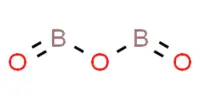Calcium chloride is an ionic compound made up of chlorine and calcium. It has a very high enthalpy change of solution and is odorless. It is an inorganic compound, a salt with the chemical formula CaCl2. At room temperature, it is a white crystalline solid that is very soluble in water. It can be made by neutralizing hydrochloric acid with calcium hydroxide.
Calcium chloride was discovered in the 15th century but received little attention or study until the late 18th century. Because it was not produced on a commercial scale until the ammonia-soda process for the manufacture of soda ash was in operation, all of the early work was done with laboratory-prepared samples.
Properties
Calcium chloride is an ionic compound formed by the elements calcium and chlorine. It is deliquescent and highly soluble in water. It is a solid salt that behaves like an ionic halide at room temperature. It is used in a variety of applications, including brine for refrigeration plants, ice and dust control on roads, and cement.
- Chemical formula: CaCl2
- Molar mass: 110.98 g·mol−1
- Appearance: White hygroscopic powder
- Odor: Odorless
- Density: 2.15 g/cm3 (anhydrous); 2.24 g/cm3 (monohydrate)
- Melting point: 772–775 °C (1,422–1,427 °F; 1,045–1,048 K) anhydrous
- Boiling point: 1,935 °C (3,515 °F; 2,208 K) anhydrous
- Solubility in water: Anhydrous: 74.5 g/100 mL (20 °C); 59.5 g/100 mL (0 °C)
- Solubility: Soluble in acetic acid, alcohols; Insoluble in liquid ammonia, dimethyl sulfoxide (DMSO), ethyl acetate
Calcium chloride has a very high enthalpy change of solution, indicated by considerable temperature rise accompanying the dissolution of the anhydrous salt in water. This property is the basis for its largest-scale application.
Molten calcium chloride can be electrolyzed to give calcium metal and chlorine gas:
CaCl2 → Ca + Cl2
Preparation
In much of the world, calcium chloride is derived from limestone as a by-product of the Solvay process, which follows the net reaction below:
2 NaCl + CaCO2 → Na2CO3 + CaCl2
North American consumption in 2002 was 1,529,000 tonnes (3.37 billion pounds).
In the US, most of the calcium chloride is obtained by purification from brine.
As with most bulk commodity salt products, trace amounts of other cations from the alkali metals and alkaline earth metals (groups 1 and 2) and other anions from the halogens (group 17) typically occur, but the concentrations are trifling.
Uses
- It is used in deicing because it prevents ice formation.
- Used in the manufacture of activated charcoal.
- Used to sterilize male animals.
- It’s found in heating pads and self-warming cans.
- It is used to correct mineral deficiencies in beer brewing.
- It is used in sports drinks as an electrolyte.
- Calcium chloride is commonly used in laboratory drying tubes.
Health Risks
Because this compound is irritating, it must be handled with gloves. It is relatively safe to handle, but when ingested, it reacts exothermically with water and can cause mouth or esophageal burning. It’s also used to treat acute hyperkalemia, hypermagnesemia, and calcium channel blocker overdose.














